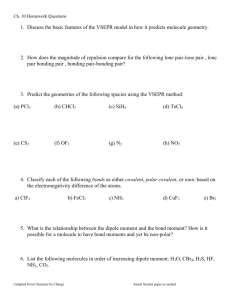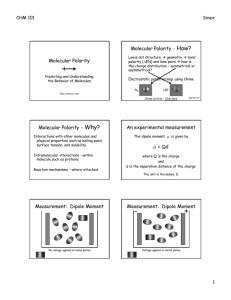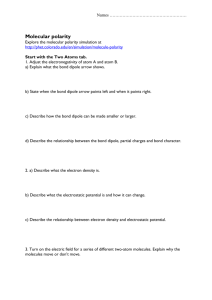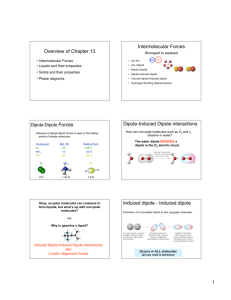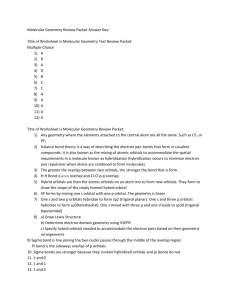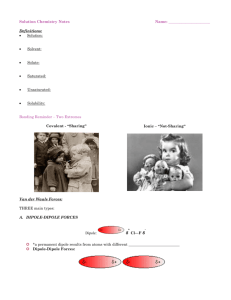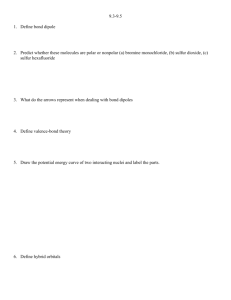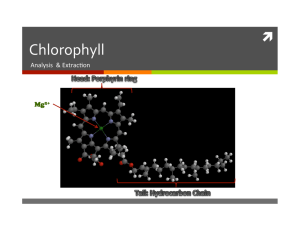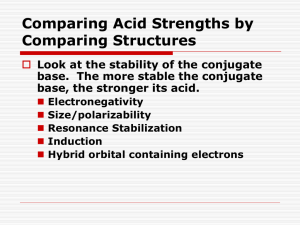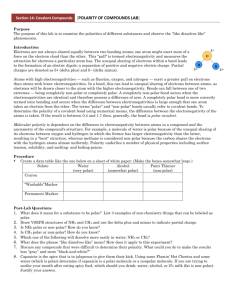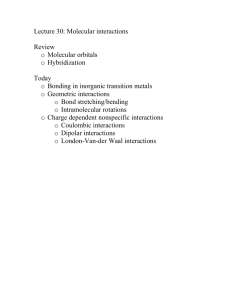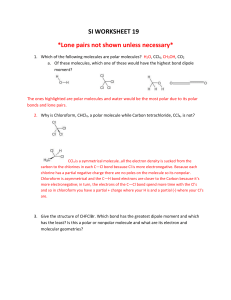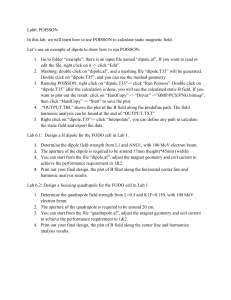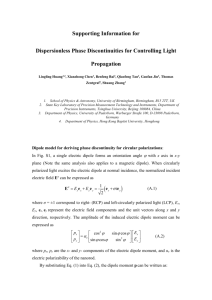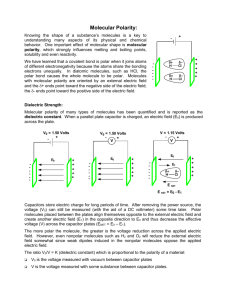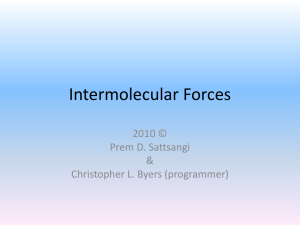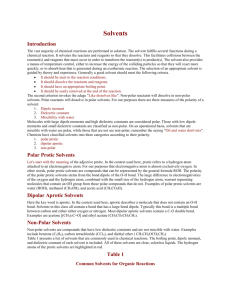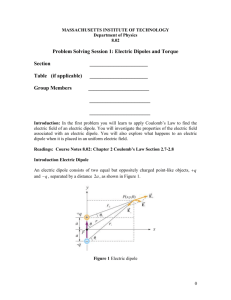Polarity Simulation KEY
advertisement
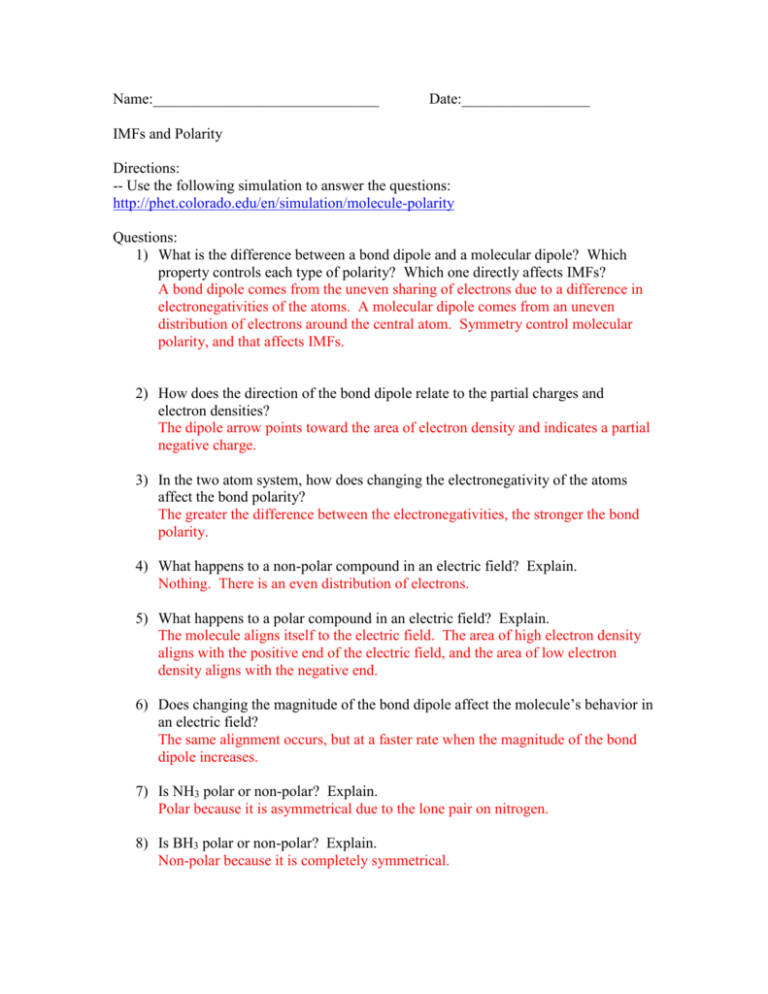
Name:______________________________ Date:_________________ IMFs and Polarity Directions: -- Use the following simulation to answer the questions: http://phet.colorado.edu/en/simulation/molecule-polarity Questions: 1) What is the difference between a bond dipole and a molecular dipole? Which property controls each type of polarity? Which one directly affects IMFs? A bond dipole comes from the uneven sharing of electrons due to a difference in electronegativities of the atoms. A molecular dipole comes from an uneven distribution of electrons around the central atom. Symmetry control molecular polarity, and that affects IMFs. 2) How does the direction of the bond dipole relate to the partial charges and electron densities? The dipole arrow points toward the area of electron density and indicates a partial negative charge. 3) In the two atom system, how does changing the electronegativity of the atoms affect the bond polarity? The greater the difference between the electronegativities, the stronger the bond polarity. 4) What happens to a non-polar compound in an electric field? Explain. Nothing. There is an even distribution of electrons. 5) What happens to a polar compound in an electric field? Explain. The molecule aligns itself to the electric field. The area of high electron density aligns with the positive end of the electric field, and the area of low electron density aligns with the negative end. 6) Does changing the magnitude of the bond dipole affect the molecule’s behavior in an electric field? The same alignment occurs, but at a faster rate when the magnitude of the bond dipole increases. 7) Is NH3 polar or non-polar? Explain. Polar because it is asymmetrical due to the lone pair on nitrogen. 8) Is BH3 polar or non-polar? Explain. Non-polar because it is completely symmetrical. 9) Rank the following compounds in order of increasing boiling point: CH3F, CH4, CF4, HF, CH2F2, CHF3 and CCl4. Explain your ranking. CH4< CF4< CCl4< CH3F < CHF3~CH2F2< HF The non-polar molecules have the lowest boiling points followed by the polar molecules with the molecule capable of H-bonding last. Non-polar molecules with higher molecular masses will have the strongest induced dipole interactions. Polar molecules can be distinguished by looking at the strength of the molecular dipole. 10) For each of the pairs, choose the substance with the higher boiling point and explain your choice. a. HF and ClF HF – H-bonds b. H2O and H2S H2O – H-bonds c. CO2 and HCN HCN – Dip-dip is stronger than induced dipole interactions. d. NH3 and BH3 NH3 – H-bonds e. F2 and Br2 Br2 – Both have induced dipoles, but bromine is heavier.
